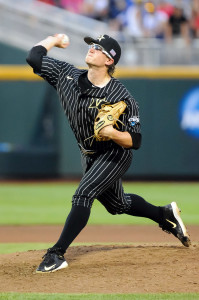TODAY: The league’s proposal will include use of a designated hitter for both NL and AL lineups, according to Joel Sherman of the New York Post. Earlier this week, The Athletic’s Jim Bowden wrote that the universal DH concept was “at least being discussed and considered” by league officials.
SATURDAY: Ken Rosenthal of The Athletic has the details on MLB’s newest proposal for a 2020 season. Rosenthal notes that nothing he describes is set in stone and could very well change upon scrutinization from the Players’ Union or medical professionals. Read his full write-up for all the details.
That said, the bones of the proposal are as follows: MLB would look to play a 78- or 82-game season beginning in early July, where teams would compete only with opponents in their geographic region (i.e., AL West teams would play only division rivals and NL West teams). Ideally, those games would take place in clubs’ normal home parks, but teams in cities where that isn’t feasible could temporarily relocate to their spring training cites or other MLB parks.
A 14-team postseason structure continues to be floated as part of this newest proposal. As previously described, each league would send 7 teams into the playoffs instead of the current 5. The best record in each league would hold a premium place in the postseason as the only team to get a bye for the first round. Of course, until we hear differently, any and all news of a playing schedule should be taken with a grain of salt.
Player pay continues to be a key question with any proposal (beyond health concerns and logistics, of course). There is no timetable for when fans would be allowed to return to stadiums, making it likely that players would be asked to accept a further reduction in pay. As Rosenthal lays out, however, they would potentially be compensated through a single-season revenue-sharing agreement.
The ramifications of this schedule proposal spread far and wide, though the priority remains on figuring out the safest and best way to return to baseball. Still, a season half the length of normal could result in suped-up playoff races.
Beyond the ramifications on the 2020 season, a wonky schedule could add another wrinkle to upcoming drafts. A short season means less margin for error and more room for potential cinderella runs or surprising collapses. Limiting the draft to just 5 rounds, meanwhile, means that a great number of potentially very good major league players will go unselected. It also likely means a stronger draft class in 2021 and beyond, as players with remaining eligibility will be inclined to return to school for another go-round. Factoring in a short season that could send some very competitive clubs to the top of the draft order, and MLB is facing a very particular couple of (draft) seasons in the short term. From a financial standpoint, clubs will have the opportunity to sign some very high-potential undrafted players for a mere $20K signing bonus. The competition and eventual distribution of those players will be an interesting case study to track over the next 10+ years.
Of course, the first step remains the approval of the proposed structure. If the owners approve of the deal on their scheduled call with the league office, Rosenthal suggests that the proposal could be sent to the Players’ Union for approval as early as Tuesday.
